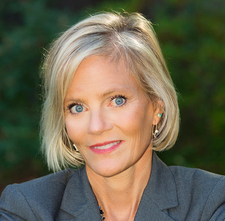
The UN climate summit in Glasgow may be over, but the debate over next steps has only just begun. As world leaders consider where to go from here, it’s important to remember that action, not commitments, will ultimately determine the success or failure of our global climate strategy — a strategy that requires the engagement of not only national governments, but companies and individuals as well.
The private sector has shown it can be a powerful engine for change but it’s the passion and ingenuity of the corporate workforce that keeps that engine humming. And therein lies the rub, for many companies have struggled to keep employees engaged — a task now further complicated by the pandemic. More than a year of isolation has left people feeling more disconnected from their employers and their sustainability work. And Zoom happy hours, while quite nice, aren’t going to bridge the gap.
Employee engagement is not a novel concept. For decades, companies have seen it as a valuable tool for securing and retaining talent, increasing productivity and improving their bottom line. Now, amid the public’s rising concerns about climate change and other environmental issues, employee engagement has also become an essential tool for implementing corporate sustainability strategies.
The good news is people want to be part of the solution. A 2019 survey of the Fortune 1000 found that half of employees wanted to see environmental protection and other worthy causes somehow reflected in their job responsibilities. And yet, the same survey also found that only a quarter of employees actually felt that their company’s stated commitments were connected in any way with their day-to-day work.
Employees are rightfully demanding more transparency and accountability from their employers, and when they don’t feel they’re getting it, they’re increasingly embracing activist tactics. In recent years we’ve seen several high-profile examples of employee activism in the technology, apparel and consulting sectors — cautionary tales for any company that wishes to avoid similar conflicts.
The pressure for companies to step up their game is unlikely to abate any time soon. Today, Generation Y makes up the largest portion of the U.S. labor force, and 70 percent of them expect their employers to take an active role in addressing issues like climate change and social justice. Moreover, Generation Z, which is just now entering the job market, is more racially diverse and better educated than previous generations, and shares many of Generation Y’s positions on environmental and social issues.
Young Americans want their employer to be an agent of change, not a barrier to it. But business leaders need to offer more than lip service to prove their bona fides, they need to foster a culture of environmental stewardship — at every level of their institution.
At World Wildlife Fund (WWF) we identified three pillars upon which companies can build an effective employee engagement program. First, equip employees with the information they need to understand sustainability issues — how they impact their business as well as their daily lives. Second, provide meaningful ways employees can put this information into action — at work and at home. And third, incorporate philanthropy — both employee giving and corporate funding — to maximize the employees’ impact and incentivize participation through creative match and grant programs.
It’s not just about dollars. Employees can give, volunteer or lend their voices to the growing chorus of people calling for change. The important thing is they feel connected to the work and empowered to be a part of the solution.
Deloitte is one corporate partner laying the path for this employee journey. As part of its strategy to reach net-zero by 2030, Deloitte has set out to drive responsible climate choices within its organization and beyond. WWF worked with Deloitte to develop a climate impact assessment to help people learn more about the impact of the food they consume, the products they purchase, and the way they travel. Employees can determine their climate impact and, more importantly, unlock positive climate actions they can take today to live more sustainably.
When employees are given the big picture and are able to see their company’s role in it, they then become empowered to carve out a meaningful role for themselves. And by bringing employees into the fold and acknowledging them as key stakeholders in corporate sustainability efforts, companies can spur exactly the kind of productivity and innovation needed to drive large-scale, transformational change.
So, there you have it. Even in these uncertain times, millions of employees across America are eager to roll up their sleeves and get to work. They have the will. Who will show them the way?
Image credit: Tim Foster via Unsplash

Sheila Bonini leads the private sector engagement team at WWF, overseeing a team of sustainability professionals supporting the organization’s conservation mission














